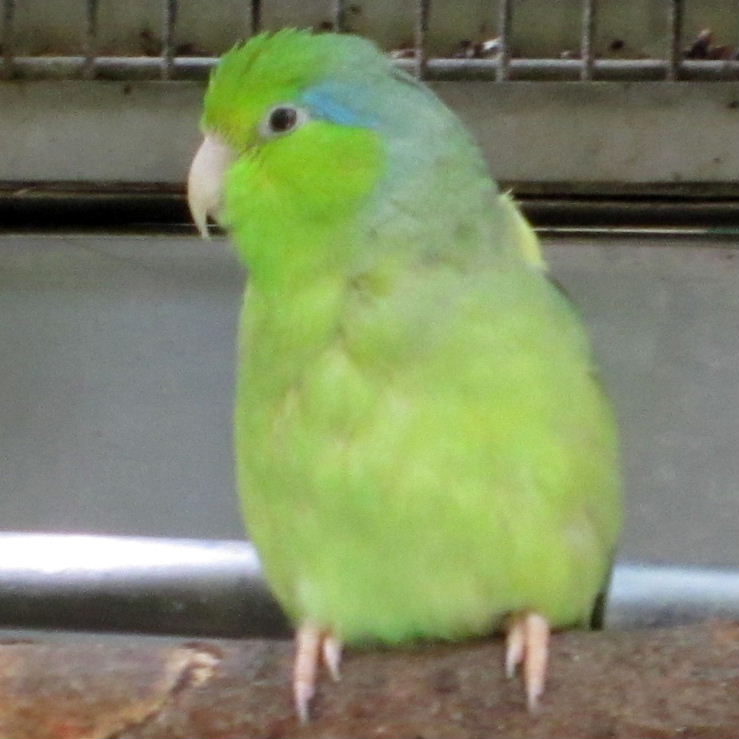"Forpus" Parrotlets Parrotlets are the smallest parrots in the Americas at some 12 cm length (the smallest in the world are the Pygmy Parrots at 8 cm). There are three genera of Parrotlet from Mexico to South America. This page shows the "Forpus" genus which has 7 species.
PACIFIC/CELESTIAL PARROTLET



The Pacific or Celestial Parrotlet, Forpus coelestis, inhabits the Pacific coast of Ecuador and Peru.
It has a more distinctive pale blue triangle behind the eye than the other subspecies, on both males and females.
The male also has a mid-blue rump and blue on his wings.



It is the most common type of parrotlet kept in captivity and several colour mutations have been bred in aviculture.
GREEN-RUMPED PARROTLET



The Green-rumped Parrotlet, Forpus passerinus, inhabits northeastern South America and the Caribbean.
The nominate subspecies shown here inhabits the Guianas.
As with all "Forpus" species, the plumage is basically green but the male has more blue-green and the female more yellow-green.



The "green rump" can sometimes look more blue than green.
AMAZON GREEN-RUMPED/DELICATE PARROTLET



Another subspecies of the Green-rumped is the Amazon Green-rumped Parrotlet, Forpus passerinus deliciosus, also called the Delicate Parrotlet.



BLUE-WINGED PARROTLET



The Blue-winged Parrotlet, Forpus xanthopterygius, inhabits the east and southeast of Brazil and also several Amazon tributaries well inland on the
far west of the Amazon Basin. It looks similar to the Green-rumped, also having a bluish-green rump and bluish-green wing edges.
It has blue on the top coverts of its wing, but so does the Amazon Green-rumped - see above.
Again the females are more yellowish green, especially the head - see above centre.
The scientific name "xanthopterygius" (yellow-winged) is a misnomer; it was given to the Canary-winged Parakeet
but also to this parrotlet in error and the naming rules meant that this bird had to keep the "yellow-winged" scientific name alongside its "blue-winged" common name.



The Ceara Blue-winged, F. x. flavissimus, of eastern Brazil above; the male has more yellow on the face.
TURQUOISE-WINGED PARROTLET



The blue extends under the wings. Immediately above is the F. x. spengeli subspecies
of Blue-winged Parrotlet of northern Colombia, also called the Turquoise-winged Parrotlet and sometimes treated as a
separate species (or even classed as a subspecies of the Turquoise-rumped Mexican Parrotlet, F. cyanopygius).
SPECTACLED PARROTLET



The Spectacled Parrotlet, Forpus conspicillatus, is native to Colombia and neighbouring regions of Panama and Venezuela.
The male (above) has blue around his eyes.



The female has a plain green face, sometimes with a suggestion of a ring.

